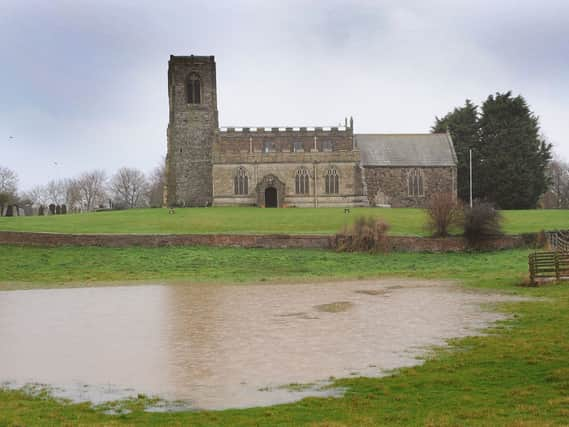The Yorkshire village that nearly became a nuclear bomb testing site


It seems incredible today to think that the coastal parish between Bridlington and Hull was once considered as a site for atomic weapons testing by government scientists.
In 1953, nuclear experts at the Aldermaston laboratory in Berkshire were casting around for a remote area of the country to detonate a prototype warhead as they battled to keep pace with the technology being developed in the Soviet Union and the USA.
Advertisement
Hide AdAdvertisement
Hide AdThey first chose a Scottish beauty spot called Duncansby Wick near Caithness because of its sparse population. Biological weapons experts had already conducted anthrax experiments in the Inner Hebrides, rendering a remote island completely uninhabitable because of the contamination.
A blast would have destroyed the famous Stacks of Duncansby and left the area barren - but a damp climate saved Caithness, as it proved unsuitable for nuclear technology. A nuclear power station was built there instead.
Advertisement
Hide AdAdvertisement
Hide AdA former military bombing range at Donna Nook, off Lincolnshire's North Sea coast, was also rejected, and attention turned to Skipsea. The place, too, was sparsely inhabited, and the RAF had recently closed a wartime base in the area, allowing for an easy land purchase should it be necessary.
Local outrage gathered pace when the plans became public knowledge, and the area's MP lobbied the government to reconsider - even citing the destruction of 'bungalows and beach huts' among his concerns.
Opposition was such that the authorities eventually backed down, and agreed with Australia that British weapons testing could instead take place Down Under. Four fission bombs were detonated in a remote site in 1956, after the resident Aboriginal population had been relocated.
It was later revealed that had a blast occurred in Skipsea, the fall-out would have contaminated a large area of the country and could have even spread to northern Europe.
Advertisement
Hide AdAdvertisement
Hide AdSkipsea's involvement in the Cold War was not over, however - in 1959 the Royal Observer Corps opened an underground monitoring post on the site of a former airfield. It was decommissioned in 1991 and restored by an enthusiast in 2008.